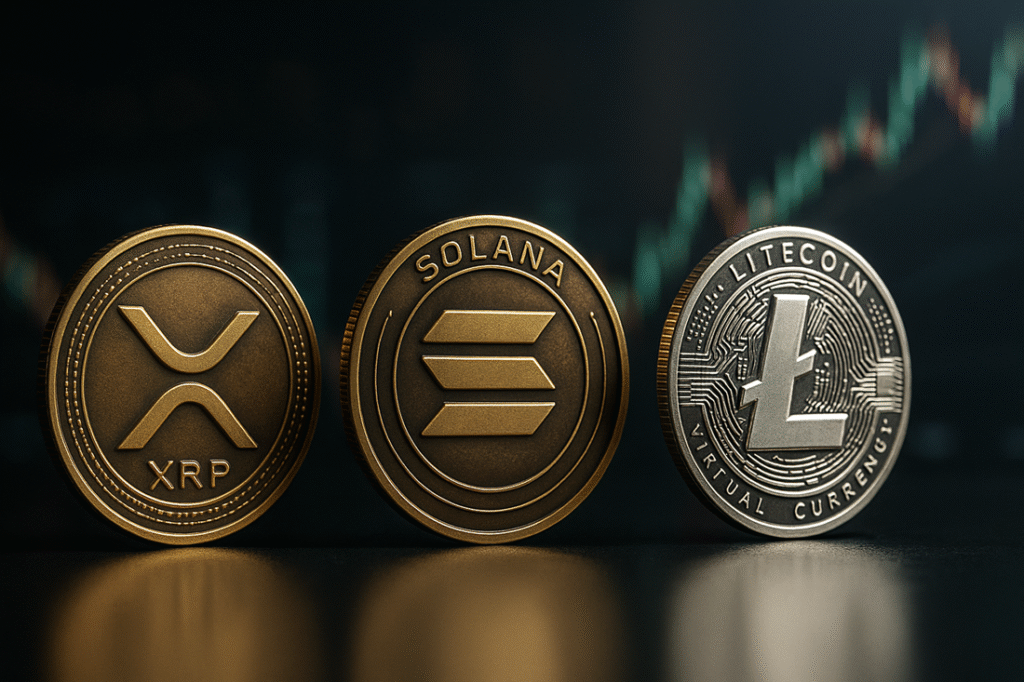In an ever-evolving financial landscape, the potential approval of cryptocurrency exchange-traded funds (ETFs) marks a significant milestone for investors. Understanding the dynamics that influence these decisions can empower stakeholders to make informed choices, especially as we look towards the future of digital assets. With the analytical insights provided by experts in the field, the following discussion explores the probability of approval for major altcoin ETFs, along with the undercurrents shaping these projections.
Bloomberg Analysts Increase Approval Odds for XRP, Solana, and Litecoin ETFs to 95%
The anticipation surrounding cryptocurrency ETFs has reached new heights, particularly with recent predictions from Bloomberg Intelligence’s leading analysts, James Seyffart and Eric Balchunas. They have revised their approval probability for individual spot-crypto ETFs — specifically for XRP, Solana (SOL), and Litecoin (LTC) — to an impressive 95% by the end of 2025. This optimistic outlook also extends to a comprehensive “basket/index” product incorporating multi-token holdings from entities like Grayscale and Bitwise.
Understanding the Forecast for Cryptocurrency ETFs
The revised forecast, publicly shared via social media, indicates a strong likelihood of approval for these ETFs by 2025. The Securities and Exchange Commission’s (SEC) acknowledgment of initial Rule 19b-4 submissions, with pending final decisions, forms a critical part of this forecast. Products like the Grayscale Digital Large Cap Fund (GDLC), potentially listed on NYSE Arca, exemplify the securities poised for regulatory review.
Factors Influencing ETF Approval Rates
Three primary factors contribute to this optimistic outlook:
1. **Regulatory Engagements**:
The SEC’s proactive engagement with relevant filings suggests a recognition of intrinsic values within these digital assets — often treated as commodities in recent regulatory frameworks.
2. **Industry Adaptations**:
Continuous amendments to S-1 filings by sponsors such as Canary and Fidelity underscore a dynamic dialogue with regulatory bodies, reminiscent of the processes preceding Bitcoin and Ether spot approvals.
3. **Market Dynamics**:
The inclusion of altcoins in regulated futures trading venues enhances their credibility, reinforcing their commodity status and bolstering the likelihood of ETF approvals.
Implications of Potential ETF Approval
Should these predictions hold true, the approval of XRP, Solana, and Litecoin ETFs would signify a pivotal moment for investors. It would allow for greater diversification within investment portfolios while offering a regulated avenue for engagement with digital assets. Such developments could fuel significant market interest and potentially drive price movements.
FAQs on Cryptocurrency ETFs
Is XRP a viable long-term investment?
The long-term outlook for XRP hinges on its adoption for cross-border transactions and regulatory approvals. Investors should consider market trends, competition, and the evolving legal landscape before committing.
What are the benefits of cryptocurrency ETFs?
Cryptocurrency ETFs offer investors exposure to digital assets without direct ownership, providing a more secure and accessible option through regulated financial products.
How does the SEC assess cryptocurrency ETFs?
The SEC evaluates ETFs based on market surveillance, regulatory compliance, and the classification of underlying assets. These assessments ensure that ETFs meet statutory requirements for investor protection.
By equipping readers with in-depth insights into the regulatory and market forces at play, this comprehensive guide elucidates the nuances of cryptocurrency ETFs, facilitating well-informed investment decisions. For real-time updates and expert insights, platforms like Finances Zippy serve as invaluable resources in navigating the complex cryptocurrency landscape.

